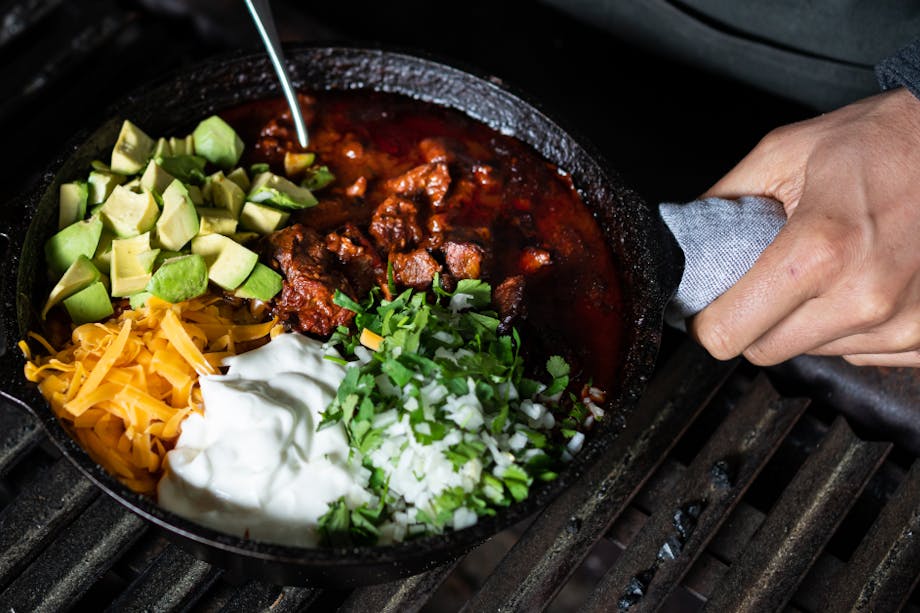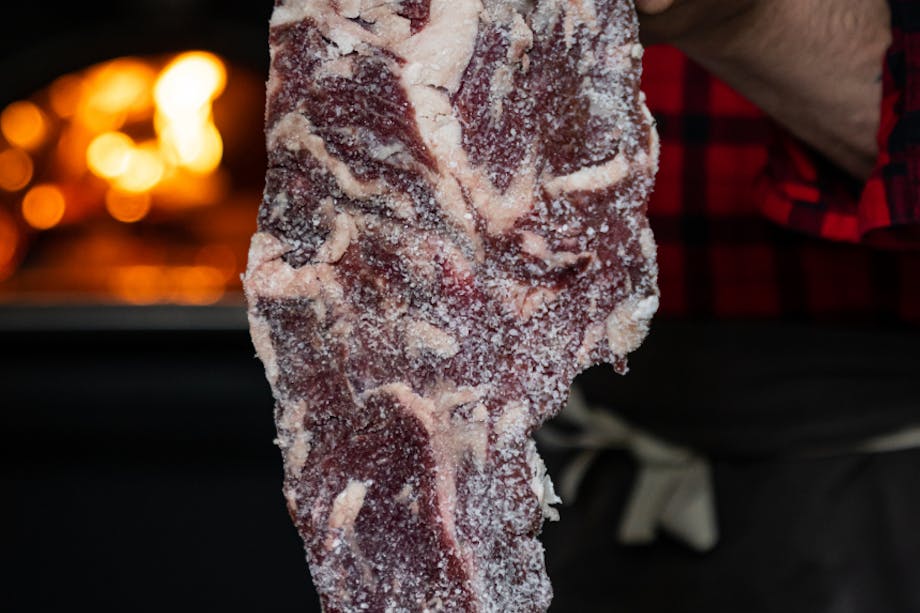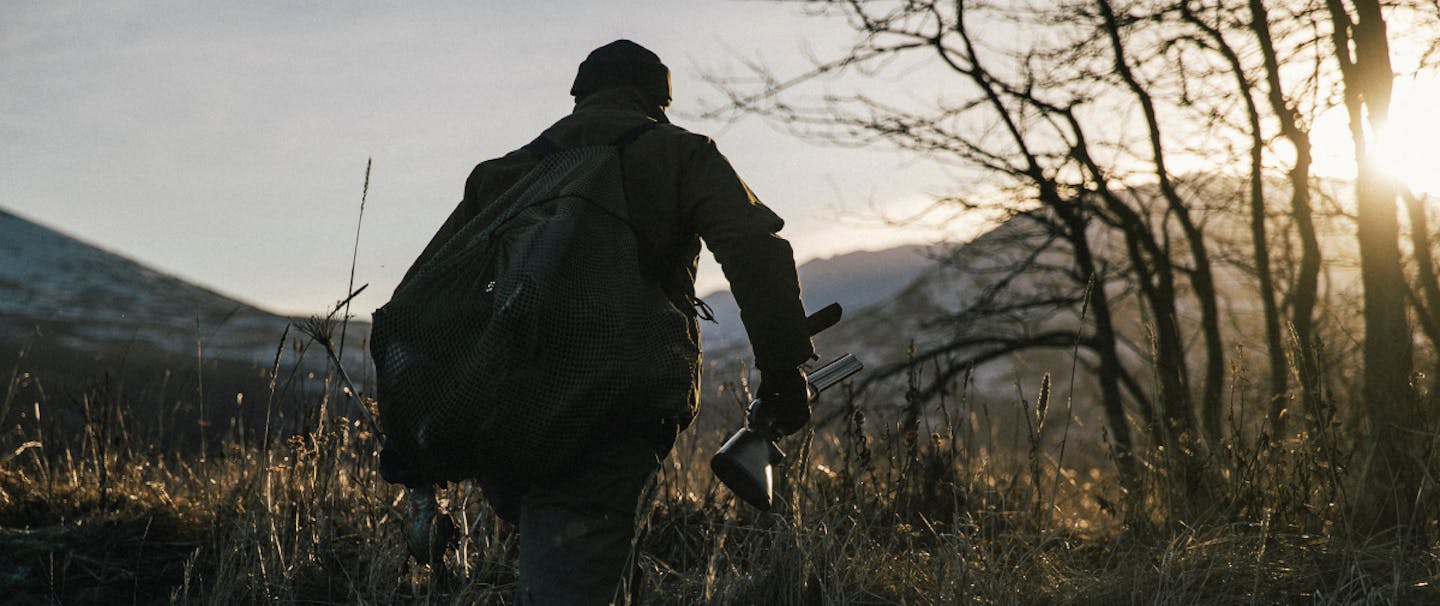WHEN IT COMES TO CLASSIC TRAIL FOODS, JERKY IS ALWAYS ON THE LIST. WHETHER PURCHASED AT A GAS STATION ON THE WAY TO THE TRAILHEAD OR MADE FROM A DEER KILLED ON A FAMILY HUNTING TRIP, JERKY PROVIDES A GREAT PROTEIN-RICH, FLAVORFUL, SHELF-STABLE SNACK FOR ROAD TRIPS, COLD RIDGELINE GLASSING, OR DRINKING BEER AROUND THE CAMPFIRE. IN THIS ARTICLE, I’LL RUN THROUGH HOW I MAKE JERKY, GIVE AN IDEA FOR A MARINADE, AND SHOW HOW TO MAKE A FIELD-EXPEDIENT JERKY SMOKER TO CURE MEAT IN THE BACKCOUNTRY.
FYI: The powers that be have not approved this preparation method, and would like you to know that consuming raw or undercooked meats might increase your risk of foodborne illness, especially if you have certain medical conditions.
At its most basic, jerky is salted, dried meat. While that can be a great option, I enjoy adding more complexity to my jerky by marinating the meat in a flavorful mix before I dry it. For this batch, I made up a marinade using a Korean chili paste called Gochujang and soy sauce, along with some aromatic vegetables and other seasonings. This creates a jerky that is a little spicy, a little sweet, and has just enough complexity to compliment the venison.

Marinade for 2 lbs of meat:
¼ cup Gochujang (can be found in most grocery stores, or online)
½ cup soy sauce
3 Tbsp honey
4 cloves of garlic, crushed and chopped
1 inch piece of ginger, grated
3 Tbsp of sesame seeds
½ tsp sesame oil
1 Tbsp kosher salt
Ground black pepper (to taste)
Chili flakes (to taste)
The process for preparing this recipe is pretty simple. First, I select a piece of meat (I prefer venison, but beef, elk, or bison also work well) that has little to no fat on it, a distinct grain, and minimal connective tissue. Before I trim and slice it, I like to freeze the meat for about an hour. This firms it up just enough to make even-slicing easier. I use a boning knife to trim away all the connective tissue and most of the nonuniform pieces, and then slice it. My ideal slice for jerky is between ⅛ and ¼ inch thick, and cut with the grain. This creates a finished product that tears along the grain, and has a bit more chew. If you prefer your jerky to be more tender, slice it across the grain.
Once I have all the meat trimmed and cut, I mix up the marinade. I then dump all the ingredients into a non-reactive container that can fit all the meat, and whisk the mixture until it’s uniform. From there, I add the meat, and massage the marinade into it, making sure that each piece is well coated. Mixing the marinade in a bowl, then putting it and the meat into a ziplock bag is also a great tactic. Finally, this all goes into the fridge or a cooler. I like to let it sit for at least 24 hours, but often for up to 48 before dehydrating. This gives the marinade plenty of time to flavor the meat, and makes sure that the salt has enough time to fully penetrate the muscle tissue, which helps to cure it.
Whether purchased at a gas station on the way to the trailhead or made from a deer killed on a family hunting trip, jerky provides a great protein-rich, flavorful, shelf-stable snack for road trips, cold ridgeline glassing, or drinking beer around the campfire.
What makes jerky such a stable trail food (as well as an enticing snack) is that it is almost completely dehydrated, but not cooked. At home, jerky is best dried in a dehydrator, a smoker, or a low oven. However, if you find yourself needing to dry out some jerky in the field, there are a couple of tactics that work well. The ideal is to build a rack somewhere sunny and with a good breeze; then simply hang the jerky and allow it to sun dry. If this isn’t an option, a field-expedient smoker is another option, and is what we’ll be talking about here.
To start, we’ll need to gather the following materials:
• 3 green sticks, as straight as possible, between 5–6 feet long, and the width of a broomstick.
• 3 green sticks, 3 feet in length, and about half the diameter of the larger sticks.
• A handful of smaller sticks, about ½ an inch in diameter, and between 1 and 3 feet long.
• Lightweight string or cord.
• A number of green fir boughs, or other leafy, moist vegetation.
• Wood for a small fire, and a decent amount of green hardwood.
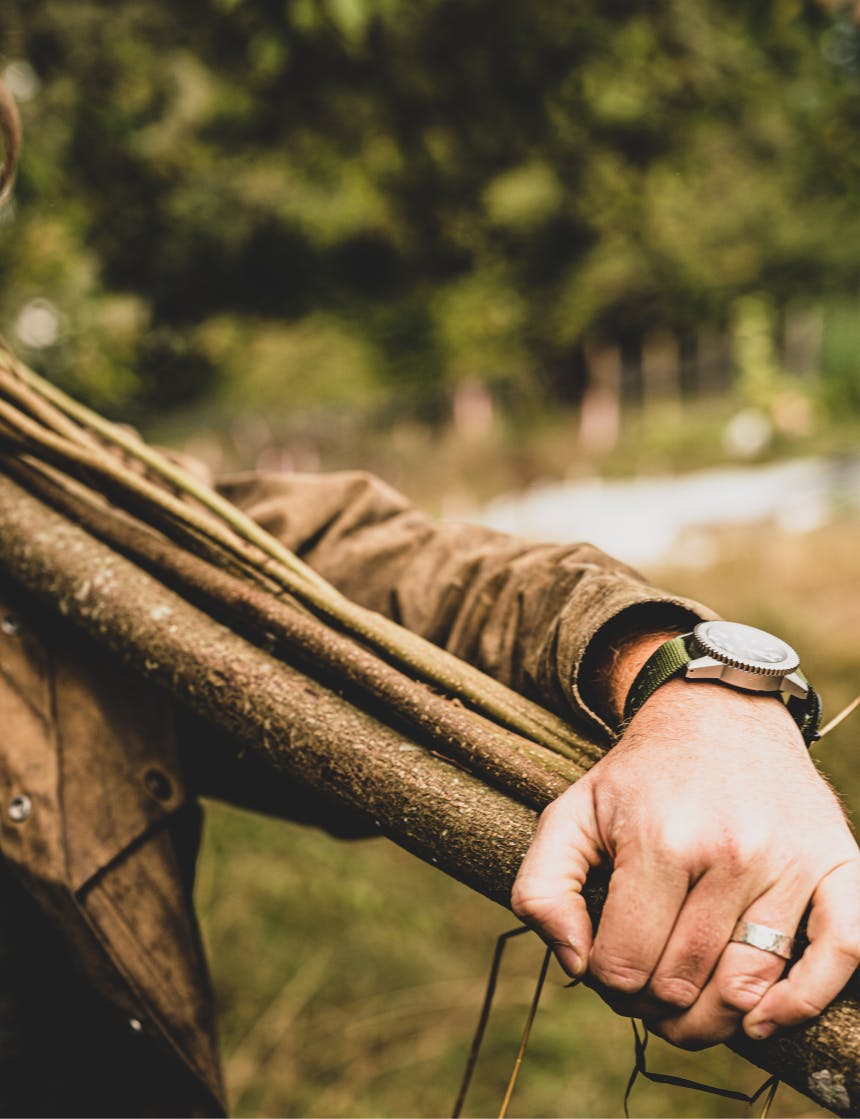
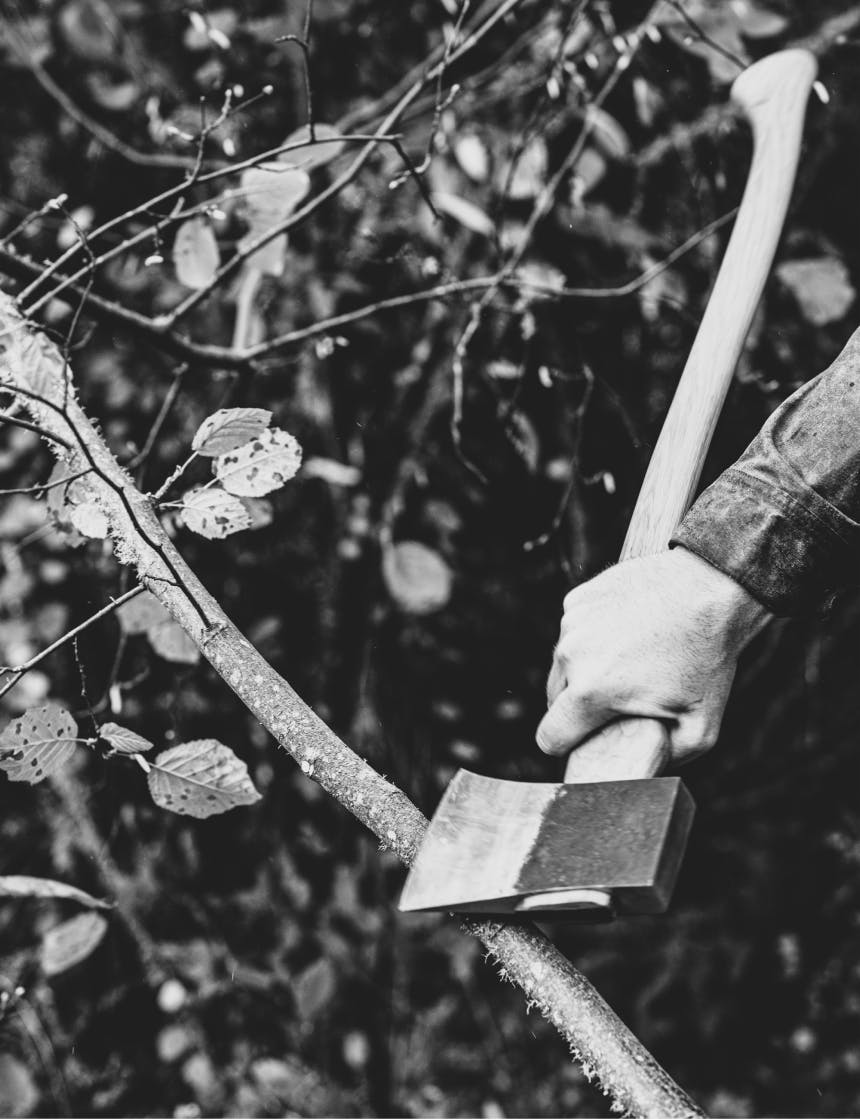
Find a site to safely build a fire, and create a firepit. Be sure to dig down past any duff, to mineral earth, and create a barrier between the firepit and any flammable material. Then, using the 3 largest sticks, tie a tripod and set it over the pit. I set my tripod such that the legs span about 2½ feet at the perimeter of the fire pit. Then, lash the 3 smaller sticks to the tripod to create a horizontal frame above the fire. At this point, the structure is now ready.
Build a small, hot fire in the pit, beneath the tripod and frame. I like to start with softwood kindling, but then move to hardwood fuel. The hardwood produces better coals, which will stay hot for a while, lessening the need to refeed the fire. As far as size goes, the goal is to have a fire that is big enough that you can feel good heat at the level of the horizontal frame, but not so big as to make that too hot at that same level that it would be grilling the meat. I shoot for somewhere around 150°. When the fire is stable at that heat level, it’s time to put the jerky on. Using the smallest sticks as hangers, hang the individual pieces of meat over the fire, making sure to keep everything spaced out enough to allow plenty of space for air movement.
When all of the meat is in place, there are two paths to take. If the weather is good, I will leave it as is. The heat from the small fire will speed up the drying, and the smoke will keep away any insects. However, if the weather is going to hinder rather than help the drying process, covering the top of the tripod with fir boughs or similar brush can protect the meat, while holding the smoke and heat in, and speed up the drying process.
Tend the fire as the meat dries. Because of the structure, an increased amount of care is required to keep things safe. As always, to be on the safe side, be sure to have the materials necessary to extinguish the fire close at hand, and don’t leave the fire unattended. If you like the flavor or need more protection from insects, green hardwood can be added to the fire to increase the volume of smoke.
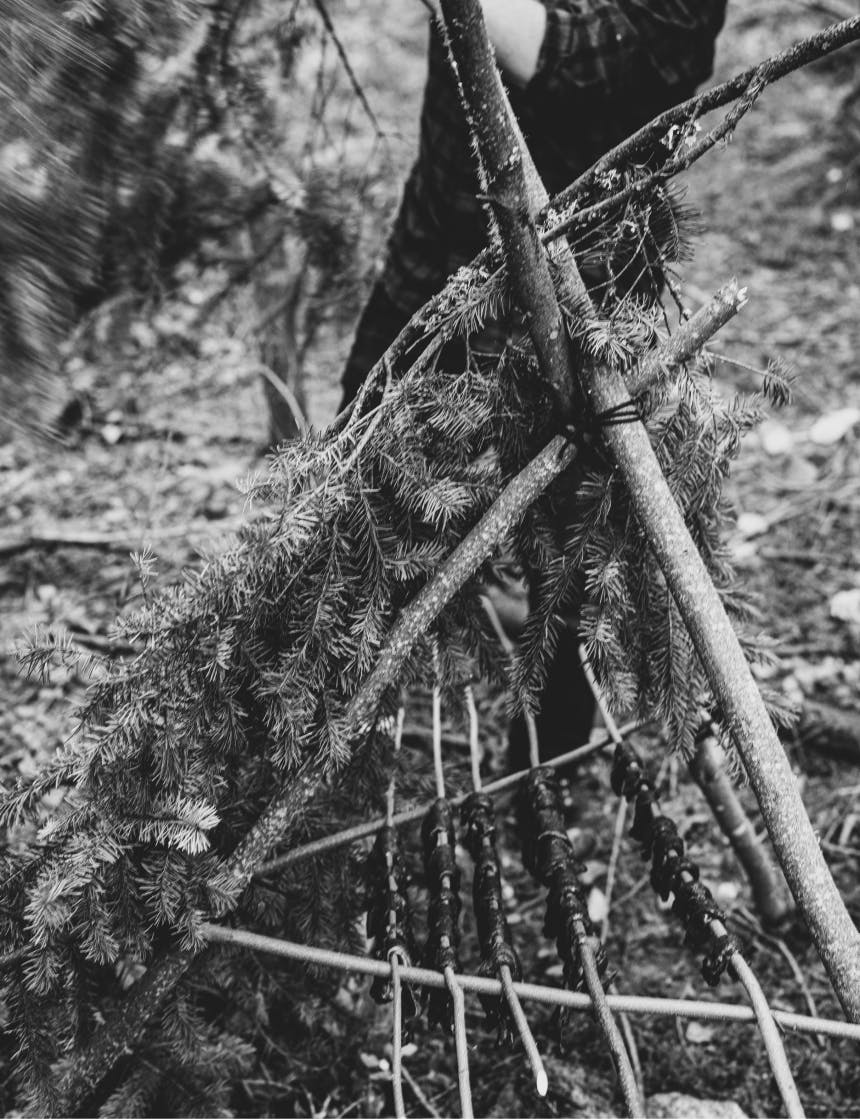

The jerky is done when it feels dry and stiff, and when individual muscle fibers will feather when a piece is bent or torn. At home, I store the finished product in the freezer for the long term, and in a paper bag in a cool dark place for short-term storage.
If you are making jerky at home, check out Hank Shaw’s recipe for an excellent explanation of his technique and a wonderful recipe. You can find that recipe here.



